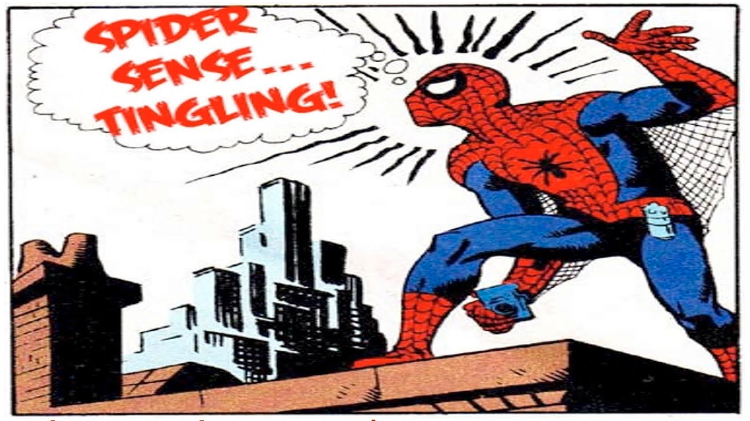Do You Have a Questioning Attitude?

Questioning Attitude
What is a “Questioning Attitude?”

The US Nuclear Regulatory Commission defines a “Questioning Attitude” as:
“…when individuals avoid complacency and continuously challenge existing conditions and activities in order to identify discrepancies that might result in error or inappropriate action.”
Also, a “Questioning Attitude” is a technique being taught to improve human performance. Read more about it below.
Could a Questioning Attitude Stop an Accident? An Example from the NRC…
In a US NRC newsletter (Safety Culture Trait Talk, Issue 3, December 2014), the NRC gave this example of when a Questioning Attitude could have prevented an accident:
“A hospital was conducting a cancer treatment with a high-dose rate brachytherapy remote after loading system using an iridium-192 source. Just prior to the cancer treatment, the hospital had replaced the source and upgraded the software.
When entering the data into the treatment system, the medical physicist was unable to electronically transfer the patient’s treatment plan from the planning system to the treatment system due to an error message. After several failed attempts by staff, the medical physicist entered the treatment plan manually into the treatment systems control console, rather than question why he was seeing the error message.
Due to a bug in the software upgrade, the treatment system software created an unexpected source step size change in the treatment parameters. When the medical physicist entered the data manually for the source dwell times, the software automatically changed the entered data to the default parameters for the source step size. The medical physicist faced an unexpected condition with the software error and failed to recognize the change in the source step size.
The patient was then treated with a mispositioned source.
The medical physicist failed to verify that the treatment computer system was correct after data entry and prior to treatment. In addition, the hospital failed to follow its procedure of performing an independent review of the treatment plan prior to patient treatment.
As a result, the patient received a radiation dose to tissue outside the treatment area and an underdose to the treatment site.
This scenario illustrates equipment (software) errors as the initial precipitating event. Had the medical physicist used a questioning attitude, he could have identified the equipment failure and the hospital could have corrected this failure before treating the patient.”
What were the failed Safeguards?
- The software had a bug.
- Software testing didn’t catch the bug before the software was used in the field.
- The medical physicist saw the error message but didn’t follow up to determine why it was occurring.
- The medical physicist decided to enter the treatment manually.
- The required second check of the treatment parameters was not performed.
In this case, Safeguard 3 (The medical physicist saw the error message but didn’t follow up to determine why it was occurring.) was the chance to have a “Questioning Attitude.”
Do you think that the medical physicist deciding to follow up on the error (Questioning Attitude) rather than entering the treatment case manually is a strong Safeguard?

To answer that question, one would have to know how common or uncommon it was for the medical physicist to have to enter the treatment plan manually. Also, it would be important to see how rushed the medical physicist was (that day and normally).
Also, it would be nice to look at the research on how good people are at detecting and acting upon automation errors. (The answer is … NOT GOOD. See: Which Human Performance Tools Work and Which Ones Don’t?)
When should YOU have a Questioning Attitude?
In the example above, the NRC says that the medical physicist should have had a Questioning Attitude. They believe that in this case, it was reasonable for this Questioning Attitude to have stopped the incident. But when should a medical physicist or anyone else have a Questioning Attitude? Here’s a list compiled from on-line sources and training courses:
- When you feel uncertain
- When your gut tells you there is something wrong
- When something unanticipated happens
- When you are using the human performance tool STAR
- When making important decisions
- When you are confused or in doubt
- When you find something missing
- When someone says, “We’ve always done it this way.”
- When you encounter inconsistencies
- Before doing something important (like a critical procedure step)
- When plans and procedures don’t agree
- When plant conditions are different than you expected
- When you encounter something new/different
- When you hear: “I assume” or “probably” or “I think …”
- When normal work processes fail/don’t produce the expected results
Here is my addition to the list:

Ahhh … if we all could have spidey senses! But even Spiderman can be distracted, overwhelmed, or complacent. Even Spiderman can fail to react when his spidey senses tingle.
Or how about this trigger that could be 100% effective if it was on the list above of when you should have a Questioning Attitude:
Just before a major accident.
In this computer bug example, the following items from the list were “triggers” that should have caused the medical physicist to have a Questioning Attitude:
- When something unanticipated happens (the error message)
- When you encounter inconsistencies (the error message)
- When you encounter something new/different (the error message)
- When normal work processes fail/don’t produce the expected results (the error message)
By the list above, the medical physicist had strong signals that a Questioning Attitude was called for.
Is this a reasonable assumption? Before you start teaching the technique to have a Questioning Attitude, you might want to know if this approach works. Read on for more information.
Is the “Questioning Attitude” Technique Justified by Human Factors Research?
For all human performance improvement techniques, I always ask:
“What is the Human Factors research behind the technique?”
Unfortunately, my digging into the human factors research is that “Questioning Attitude” isn’t a very reliable way to improve human performance. In fact, it probably counterproductive.
I’m not saying that it is a bad idea to “be careful” or to try to find the causes of unexpected problems. But the odds of this technique working are probably not very good. In the Stopping Human Error Course (mentioned below) we show that the odds of a trained operator (for example, a medical physicist) successfully questioning automated responses is somewhere between 66% and 0%.
So what do you think? Are the odds of a Safeguard (Questioning Attitude) working being between 67% and 0% a good Safeguard?
“Questioning Attitude” Causes Blame
What is the most likely result of depending on a “Questioning Attitude” to prevent accidents?
BLAME
Why? Because when an accident happens, the almost knee-jerk reaction is to say:
“They should have had a questioning attitude.”
That’s what, in effect, the NRC article said. That’s what I’ve heard many senior managers say. That’s what many investigators with 20/20 hindsight conclude.
Of course, the corrective action could be:
More training on Questioning Attitude.
OR
Counsel the employee to have a Questioning Attitude.
OR
Fire the person for not having a Questioning Attitude.

We all know that blame reduces the odds of good root cause analysis and human performance improvement. Therefore, you don’t want to promote a Safeguard that has a failure rate of 33% to 100% when it also promotes blame and reduces the odds of performing a good root cause analysis.
You Need to Choose Your Approach to Improve Human Performance
Without questioning the basis for an approach called “Questioning Attitude,” it seems like it would be a good idea. But after looking at the human factors research, you may question the likelihood of the success of implementing such a tool.
Yes – a medical physicist could stop and report the problem and wait for a solution. The medical physicist could become more careful after the error message and call for an independent second check of the treatment plan that was entered manually. (Even though it seems they had stopped doing this required second check.)
This second check could catch the problem. (Again, what are the odds of a second check catching an error? It is not 100%.) But you may decide that the low odds of success coupled with the negative outcomes of blame may make you question the success of a “Questioning Attitude” calling for a second check. You may decide that the tool called “Questioning Attitude” would be more counterproductive rather than effective.
But that is for you to decide.
Learn More About Human Performance Improvement Techniques
Want to find out the odds of a questioning attitude stopping an error? Or maybe the human factors research about self-checking?
Want to learn techniques that have a high likelihood of improving human performance including the techniques that work the best?
Then you need to attend the new Stopping Human Error Course.

When is the next course? June 14-15 in Knoxville, TN. Just before the 2021 Global TapRooT® Summit.
This course is being held live, in-person and VIRTUALLY (we call that a Combined or Hybrid Course).
CLICK HERE to register for the course in Knoxville and if you choose the virtual option, attend from your desk, anywhere in the world).

Or, you can attend the Stopping Human Error Course and the 2021 Global TapRooT® Summit that has a track titled “Stopping Human Error Best Practices.” When you register for both at once you will save $200 off the combined fee for both the course and the Summit. And both the course and the Summit are being held in-person and virtually. Decide which you want when you register.
See the complete Summit schedule/session topics list by CLICKING HERE.
Register for the 2021 Global TapRooT® Summit and the Stopping Human Error Course by CLICKING HERE.
Don’t wait. Seats in both the virtual and in-person courses are limited. If you wait, you may miss out. Also, if you are attending virtually, we need time (up to a month) to ship your materials so they arrive at your address. So, register today or you may not receive your materials before the course.
Book 10: Stopping Human Error
If you attend the course, you will get the book, Stopping Human Error, as part of the course materials. It is a $99.95 value.
Want to read the book’s Foreword before registering for the course? CLICK HERE and read it today.
We are looking forward to seeing you at the course.
But if you can’t attend the course either in-person or virtually, you can still buy the book. Order it by clicking HERE.





Great article!